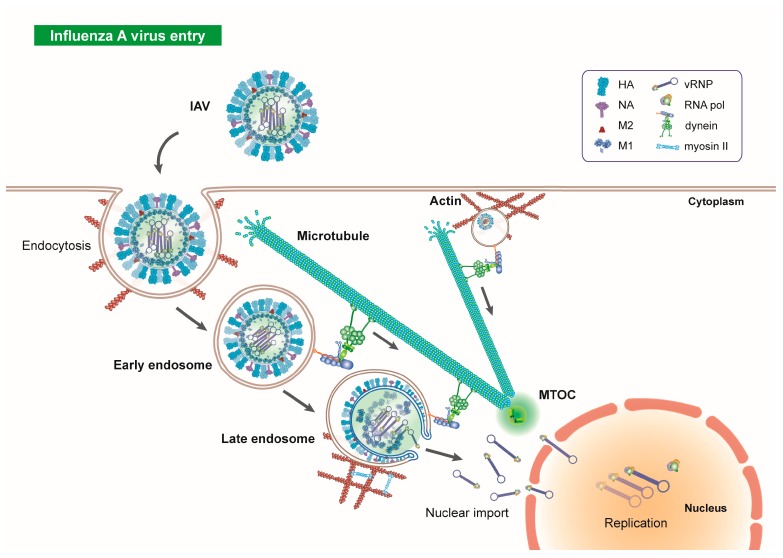Figure 2.
Influenza A virus endocytosis and early trafficking through the cell. IAV is a single-stranded negative sense RNA virus, belonging to the Orthomyxoviridae family. Viral particles are composed of an outer envelope containing the glycoproteins hemagglutinin (HA) and neuraminidase (NA) and M2 ion channels. An M1 shell constitutes the viral shell, within which are 8 viral gene segments each in association with nucleoprotein (NP) and an RNA polymerase. The influenza polymerase itself is formed from three subunits; PA, PB1 and PB2. Following attachment of IAV to permissive cells via sialylated cell-surface receptors, the virus is endocytosed via clathrin-mediated endocytosis and macropinocytosis. After initial association with the actin-myosin network, early endosomes containing IAV virions interact with microtubules via dynein motor proteins for retrograde traffic towards the MTOC, in close proximity to the cellular nucleus. Upon reaching the perinuclear region, IAVs undergo low-pH mediated fusion with the late endosomal membrane. M1 shell uncoating is dependent on microtubules, actin, and the motors dynein and myosin II. Release of vRNPs into the cytosol and uptake into the nucleus precedes viral genome replication. Three-dimensional structural data: PDB ID HA (2IBX); NA (6CRD); M2 (3BKD); M1 (1EA3) [65].

